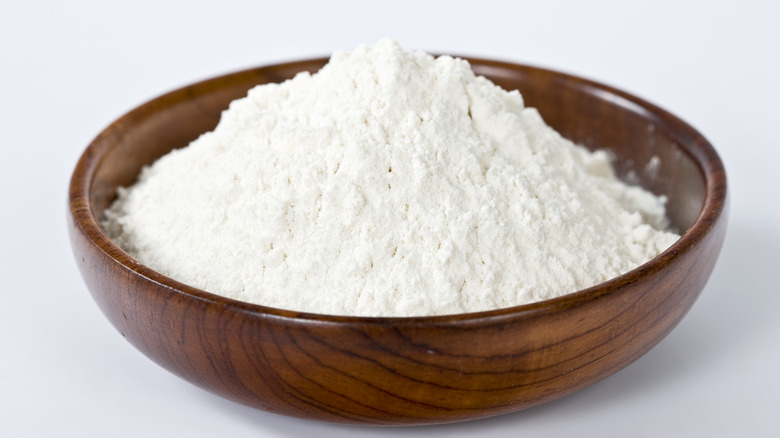The Reason You Shouldn't Keep Whole Grain Flour In The Pantry
Where do you keep your flour? The most common answer is in the pantry, sealed up in a bag or plastic container. After all, flour is a classic pantry staple. But this rule shouldn't apply to something like whole wheat flour. Certain types of flour, like nutty whole wheat flour and other whole grain blends, should be refrigerated rather than stored in the pantry to keep it at peak freshness. Why? It has to do with the chemical makeup of wheat flour.
Whole wheat flour differs from plain flour because it still contains the bran, endosperm, and germ of the wheat, while white flour only contains the endosperm. While this addition of bran and germ brings a helping of nutrition to the flour, it also makes it twice as likely to spoil. These nutrients can go rancid within two to three months of purchase, which can be a bad timeline for the casual baker. Instead, you can refrigerate your whole wheat flour to nearly double that time and keep it tasting as fresh as the day it was bought.
Keep your flour fresh in the fridge
First, let's address how to properly seal and package your whole wheat flour before placing it in the fridge. To keep your flour from absorbing any odors or excess moisture, choose a secure, airtight container to store it in. Sealed plastic containers and zip-top bags are a good place to start.
If room in the fridge is a little tight, consider storing the flour in the freezer, as this cool space will work equally as well as the fridge for preserving the freshness of the flour. Your cold flour will be just fine to use straight from the fridge or freezer for most baking purposes. For a bread recipe that requires some fermentation, you'll want the whole wheat flour to come to room temperature before using. This tip is useful for any nut flour or other whole grain flour varieties you may have as well. Long story short, for the best flavor, keep your whole wheat flour in cold storage.

